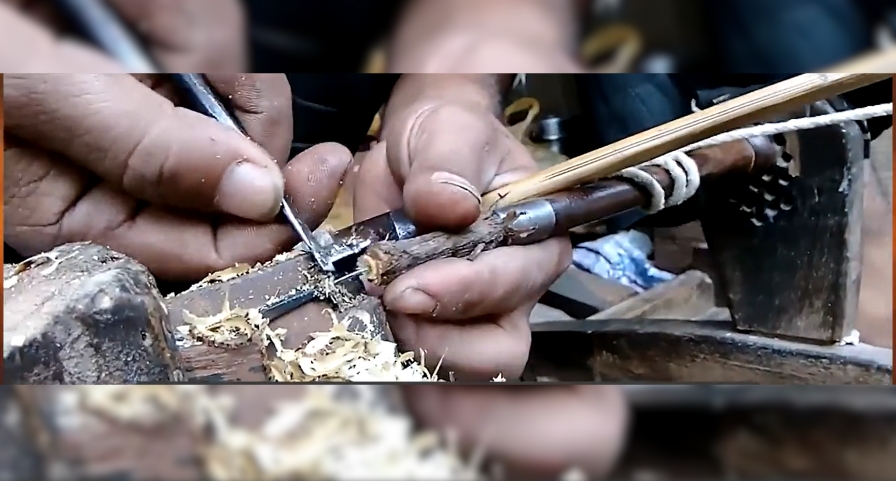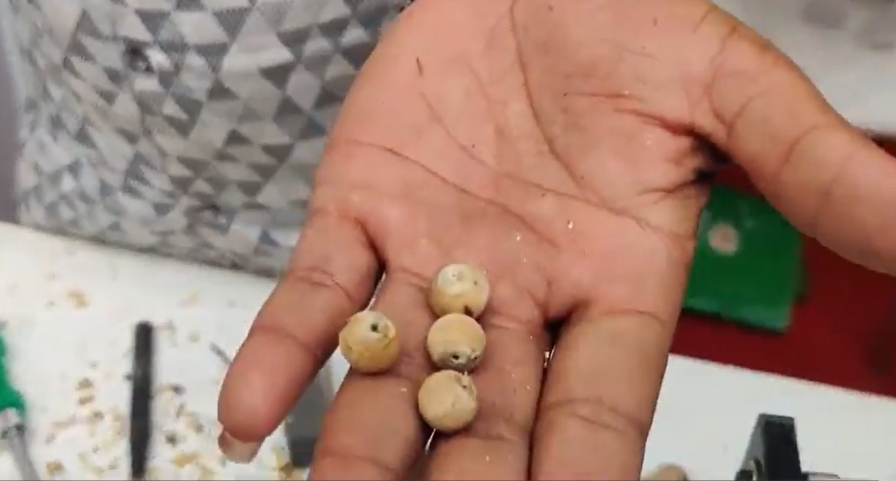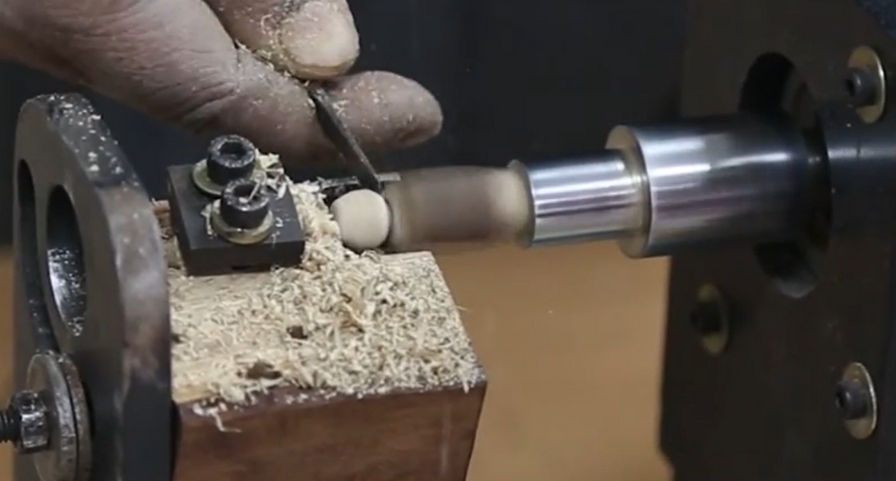For generations, artisans crafting Tulsi mala beads have relied on traditional, labour-intensive methods. Each bead is painstakingly shaped and drilled by hand, a process that demands skill, patience, and significant physical effort.

While the craftsmanship is admirable, the reality is that manual bead-making can be exhausting, and often inconsistent. Many artisans, especially women who form the backbone of this craft, struggle with low productivity and a limited earning potential due to the traditional, manual method.
The need for a smarter, more efficient way has long been desired.
Also read: An all-in-one post-harvest fix by IIT Kanpur
An innovative solution
To address these challenges, the Rural Technology Action Group (RUTAG) IIT Delhi has developed the Tulsi Mala Bead Making Machine, a lathe machine intended to create wooden beads ranging from 5mm to 25mm in diameter.

This invention serves as a breakthrough innovation to address issues faced by the artisans while also preserving the artistry of tulsi bead making.
How it works
At the heart of this device is a 550-watt servo motor, designed to automate the turning, drilling, and shaping of beads with remarkable accuracy.
Running on a 220V AC supply, it is easy to set up and use, even in rural settings. Unlike traditional methods, where artisans perform each step separately, this machine combines simultaneous turning and drilling, cutting the workload by half.
Moreover, the design of the machine allows for the artisan to operate it comfortably while standing or sitting.
Benefits that accrue
At a cost of Rs 18,000 per unit, the machine promises a 100% productivity boost, enabling higher outputs in less time. Higher production translates into lower labour costs and increased economic benefits.
Also read: IIT helps tech behind cold-pressed oil be light-weight, affordable

According to Dr. SK Saha from IIT Delhi, artisans who earned about Rs 700-800 a day, managed to scale their earnings to Rs 2000-3000 a day, after the intervention. With a commitment to the Sustainable Development Goal (SDG) of no poverty, this invention empowers women and self-help groups to earn their livelihood in a comfortable yet productive manner.
The Tulsi Mala Bead Making Machine is reshaping the future of bead artisans, particularly women by easing physical strain, increasing efficiency, and boosting earnings. It’s proof that technology, when designed with people in mind, can preserve tradition while making life better.
What is RuTAG
RuTAG is an initiative of the office of the Principal Scientific Advisor to the Government of India that started in 2004. It was conceptualised as a mechanism to provide higher levels of science and technology interventions and support for rural areas.

Under this initiative the interventions are designed to be primarily demand-driven, focussing on bridging technology gaps at the grassroots level, upgrading technology and providing training and demonstrations through innovative projects.
Also read: Mechanised device brings ‘shear’ benefits to shepherds
In the lead image on top, a tulsi mala bead is produced using the Tulsi Mala Bead Making Machine, an innovation of RUTAG at IIT Delhi. (Screengrab from a YouTube video of the Office of the Principal Scientific Adviser to the Govt. of India)
The Rutag Smart Village Centre (RSVC) Program, initiated under the Office of the Principal Scientific Adviser (PSA), GoI, aims to drive scientific and technological interventions in rural development. It focuses on enhancing livelihoods, sustainable agriculture, and innovation-driven solutions for rural communities.








